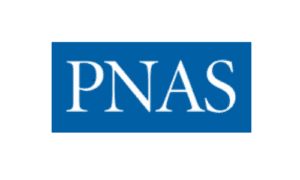More insects negatively affected by neonicotinoids than previously assumed
Neonicotinoids have more harmful effects to useful insects than previously thought. The insecticide not only directly affects insects through nectar or flower-pollen, but also through honeydew. Its range is, therefore, much greater than we used to believe. This discovery was made during research of Spanish universities and the Laboratory of Entomology of Wageningen University (the Netherlands).
The research report, titled ‘Neonicotinoids in excretion product of phloem-feeding insects kill beneficial insects’ was published in scientific journal PNAS. The European Commission has banned the use of 3 neonicotinoids in field cultivation.

RESEARCH ABSTRACT:
Pest control in agriculture is mainly based on the application of insecticides, which may impact nontarget beneficial organisms leading to undesirable ecological effects. Neonicotinoids are among the most widely used insecticides. However, they have important negative side effects, especially for pollinators and other beneficial insects feeding on nectar. Here, we identify a more accessible exposure route: Neonicotinoids reach and kill beneficial insects that feed on the most abundant carbohydrate source for insects in agroecosystems, honeydew. Honeydew is the excretion product of phloem-feeding hemipteran insects such as aphids, mealybugs, whiteflies, and psyllids. We allowed parasitic wasps and pollinating hoverflies to feed on honeydew from hemipterans feeding on trees treated with thiamethoxam or imidacloprid, the most commonly used neonicotinoids. LC-MS/MS analyses demonstrated that both neonicotinoids were present in honeydew. Honeydew with thiamethoxam was highly toxic to both species of beneficial insects, and honeydew with imidacloprid was moderately toxic to hoverflies. Collectively, our data provide strong evidence for honeydew as a route of insecticide exposure that may cause acute or chronic deleterious effects on nontarget organisms. This route should be considered in future environmental risk assessments of neonicotinoid applications.
Honeydew
Neonicotinoids are absorbed by the plant. Insects feeding on plant juices, such as aphids, phyllids, mealybugs and whiteflies, take in these juices and excrete them as honeydew. Honeydew is a sticky fluid which is a food source to many useful insects, like ichneumon wasps and hoverflies. The research report ‘Neonicotinoids in excretion product of phloem-feeding insects kill beneficial insects’ concludes that the many remains of neonicotinoids in honeydew kill ichneumon wasps and hoverflies within several days.
Poisonous products
Professor and co-author of the research article Marcel Dicke of the Laboratory of Entomology explains that the possibility of neonicotinoids being present in honeydew, and in that way being a threat to useful insects, was never taken into consideration before. He hopes that this research project will be used in the policy-domain, and that it proves useful in evaluating the renewed wish for the permission of the use of neonicotinoids. According to him, reintroduction of neonicotinoids is not desirable. “We need to notice that the use of neonicotinoids is outdated and not appropriate. It is poisonous, not only to bees, but to many other insects as well.”
Risks of dissemination
In the research report, the researchers recommend that in future assessments of systemic pesticides, the risks of spread through honeydew should be considered as well. In the European assessment of neonicotinoids its harmfulness for insects feeding on nectar and pollen and the possible spread of neonicotinoids through the air were examined, but the dissemination of neonicotinoids through honeydew was not yet taken into consideration.
